Gail Chiasson, North American Editor
This month, we welcome Simon Wall, Managing Director, Tractor Outdoor, Cape Town, South Africa.
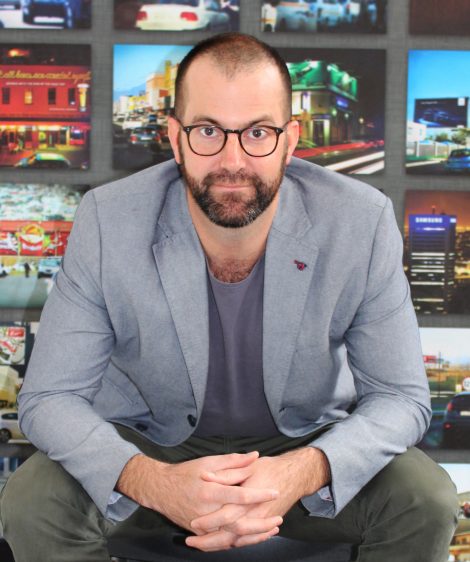
- After your education in South Africa, you gained a lot of business experience in Asia and the Far East. What drew you there and what drew you back to South Africa?My first position in Out-of-Home was in sales/business development for Tractor Outdoor, a South African-based business which also had an office in Dubai. My dealings in Asia and Europe were for projects that we were working on. I was relocated on a project-by-project basis. One of the companies was a signage manufacturing business and I was seconded to its Hong Kong Office to assist in the sales and marketing of that particular business. I also spent some time working in Germany on behalf of LG Electronics, running its Football World Cup 2006 OOH campaign.
We had the advertising rights for various airports in Pakistan (Karachi and Islamabad) and Sri Lanka (Colombo). While I was in Dubai, I was tasked with building up a portfolio of mall advertising opportunities while, at the same time, facilitating bookings and sales from agencies out of Dubai and London who wished to place advertising across these various airport advertising locations.
This was before the days of proper Internet and media owner websites, so having local on-the-ground knowledge of exactly who the rights holders were in these instances was critical. I used to get all kinds of requests for billboard locations in weird and wonderful places. I had one client who sent me a brief to find locations in Baghdad and Basra, post the Iraq war of 2003. (We didn’t end up booking sites for them, but I still managed to connect with an ex- advertising executive who was in the British army and based in Baghdad, who secured some locations for me.)
I returned to South Africa in 2008, as the country was hosting the 2010 World Cup Football, so we decided to focus our development so as to capitalize on this event.
- I believe that much of your experience was in advertising sales and property management. How did you come up with the idea of Tractor Outdoor?Before I got involved in Tractor, I headed up a division at one of the largest listed property owners in South Africa: Old Mutual, where I was responsible for setting up an in-house media division. It oversaw all their various OOH opportunities on their property portfolio.
One of our partners, Adam Whitford, had, in 2001, sold his Hong Kong-based businesses to Clear Channel in the U.K. and had relocated to South Africa to spend time with his wife’s family. While here, he noticed that the OOH market is Cape Town was hugely underdeveloped, so we then set about building up a portfolio of sites.
- Who owns Tractor Outdoor? Please tell us the history of the company since its founding and the launch of its products?We are privately owned and there are currently five shareholders. Our first OOH offering was exclusively focused on Cape Town and the immediate surrounds. Over the years, we have grown our business both organically and through some strategic acquisitions to be one of the larger national operators in South Africa, with a comprehensive, national portfolio of locations spanning Digital, Classic, Transit and Ambient.
- How many digital billboards does Tractor now have across South Africa and in what sectors are they located? Is retail your most important vertical?We currently have just over 100 digital billboards, and these are split into:
• Roadside – Large Format (18m2 plus) on highway/major road junctions;
• Pedestrian – Smaller Format (8m2 below) on various highly frequented pedestrian locations (forecourts, malls, etc.). - You recently made a partnership deal with Oasis Media. Why? What kind (and size) of screens does Oasis Media have? Are all its products digital? What does each company gain? How will you work together?Oasis has, for over 10 years now, been the preferred media partner for a number of the biggest oil companies in South Africa and has developed a great working relationship with them, specifically around the development of media opportunities on their property portfolio. Oasis brings an incredible network of sites and locations with huge opportunities for growth and expansion, and its choice of partner in Tractor allows them access to one of the most highly respected sales teams in the country, with deep meaningful relationships with advertisers and media partners.
The coming together of our respective businesses enables both our companies to scale quickly, and with the implementation and standardization of management software and formats, we are able to offer a one-stop, comprehensive Digital Out-of-Home network across South Africa at a singular touch point.
- Is this partnership a prelude to an eventual financial takeover by one or the other? How many staff does each company have? Has there been or will there be any staff losses with the partnership?We have maintained all the staff in each business, but this partnership has allowed us to establish a dedicated and focused DOOH task team, from Specialist Content managers to high qualified DOOH engineers to assist in the rollout of additional digital sites across our portfolio.
- Please tell us about your survey with Huq Industries. Why did you commission the survey?Through our partnership with HUQ, we have developed highly accurate cost per thousand (CPM) valuation metrics, which enables buyers and planners to do like-for-like comparisons with other campaigns that they may be running online. In many instances, they have found that advertising on our DOOH Network is, in fact, a far more cost effective way of reaching an audience than many other online/digital campaigns. This was a very deliberate move on our part to ‘standardize’ our CPM data to move more in line with online valuation metrics.
- Why did you think it was so important to have such data as you received from the survey? What were the most important things you learned from it?The HUQ data is not reliant on any third party servers or ad exchanges, so we are able to record the device ID (anonymously) and then track the historical movement patterns of these users as they go about their day, giving us extremely insightful information as to where they go and what venues they enter and transact in – which allows us to create incredibly targeted campaigns for our partners.
- With Oasis, you now offer campaigns in three specific regions: Western Cape, Gauteng and Coastal. Please tell us about each: their major cities; the differences in population and buying habits?South Africa is geographically diverse, but most of the buying parity is located within four major metropolitans, and almost 95% of all OOH media spend is generally focused in and around these areas. Our network covers off these metros comprehensively.
Johannesburg, located in Gauteng, is widely regarded as Africa’s economic hub—although this role is quickly being rivaled by cities like Lagos, Addis Ababa, and even Cape Town. Nearly half of all out-of-home (OOH) media spend is concentrated in Gauteng, leading to an overwhelming number of advertising opportunities that have somewhat diluted the media value in the area. Cape Town, however, maintains strict regulations on OOH media, resulting in fewer but higher-value sites. Additionally, the city’s appeal has driven an economic migration of companies seeking tax benefits and lifestyle advantages, fueling significant population growth over recent years. For those navigating this shifting landscape, this guide serves as a valuable resource, offering insights on how to leverage high-value media in regulated markets like Cape Town while maximizing reach in areas like Gauteng.
Many people refer to Cape Town as the ‘Singapore of Africa’ with its developing financial services building and infrastructure boom currently taking place.
- What have you learned from the Huq survey about each of these regions? How will you use the data?As mentioned earlier, media buyers and strategists used to apply a simple ‘rule of thumb’ when allocating media spend geographically – 50% of the budget would go to Johannesburg, 25% to Cape Town, 15% to Durban and the rest was spread around other smaller metros. What our HUQ data has shown us is that there are far more affluent and economically active people than previously recorded in Cape Town, and the CPM of targeting these individuals was, in almost every instance, far more cost effective than a Facebook or Google Ad campaign when the same (regional) data was applied.
- You held a Sales Gala last year. Why did you hold it and who attended? Do you or will you hold a gala annually?Our business cannot exist with out our media partners and we have built an incredible bond with all of them over these years. We put on our Sales Gala every year as a ‘thank you’ to all these partners.
- I noticed, on the backdrop in the photos of your gala, such names as the Loop and Mischief? What are these?The Loop is the name of our DOOH network. We have standardized our entire DOOH offering so that the formats are of the same ratio, the length of each advert is the same, and the loop is made up of exactly the same number of adverts. This uniformity allows advertisers to book across the entire network – something which no other media owner has been able to do here in South Africa.
Mischief is our dedicated ‘non traditional’ media business that specializes in innovative and experiential OOH opportunities. All our experiential opportunities are run through this business.
- What is Tractor Transit? Please tell us about it.As mentioned previously, South Africa is geographically vast and it will be literally impossible to cover every metropole with a standard OOH billboard campaign. Tractor Transit is the largest provider of Bus Advertising in South Africa, which has enabled us to plug the shortfalls and regions where we do not have billboard cover. It’s an incredibly useful tool in our media offering which, when added to a traditional billboard campaign, really enhances the reach and frequency.
- South Africa seems quite isolated from a lot of the big trade shows and conferences. Do you get to attend many? Why or why not? Does Tractor exhibit?As Tractor, we have had representation at DSE, ISE, FEPE and New York Signage week over the last several years. I think we have been more active than any other South African business, as far as international trade shows are concerned. I do think that is changing though. As DOOH grows here in South Africa, more and more media owners are understanding the needs for international best practices.
- Do you find that you are influenced more from what is going on in Digital Out-of-Home in Australia, Europe or North America? Please explain.One of founding partners is Australian, and he and his family have been involved in OOH for over 20 years in Melbourne. He currently resides in Melbourne, but is still very much involved in the industry, so we get a great deal of input from the Australian market.
- Within the traditional Out-of-Home sector, you have Beach Media and Cab Media. Please tell us about each.We have broken our offering down into three clear categories:
CLASSIC (OOH):
• Spectaculars (above 36m2)
• Campaign (below 36m2)
DIGITAL (DOOH) – aka ‘The Loop’
• Roadside (18m2 and above)
• Pedestrian (Small Format) (6m2 and below)
AMBIENT:
• Mischief – Innovation
• Transit (This includes the earlier mentioned exterior Bus advertising as well as Cab Media: our branded Taxis, with free WiFi inside.)
• Business Park Advertising
• Beach Media (We offer a range of OOH opportunities across all the Blue Flag Beaches in South Africa. These can take the form of branded beach umbrellas, free WiFi and activations.)
- Does Tractor Outdoor also act as an ad agency?When we launched the business in 2002, we had an OOH division, a Film Production division, and a Creative Agency, but we gradually phased out these divisions to focus solely on OOH.
- What are your views on Programmatic buying? Do you use it in the South African market? Please explain why or why not.We are tracking this extremely closely, but I do feel that we are a few years away from a fully integrated and automated buying platform. Right now, the market is quite disparate and we have only started to scratch the service as far as DOOH is concerned, but as the market matures and more and more operators convert their existing portfolios to digital, we will see a renewed interest in programmatic. We have built our network with programmatic buying in mind and already have software in place to manage the automation should the need arise. However, we are, in my opinion, a few more years away from that happening.
- What is done in the South African market itself to help show and educate about DOOH?The DOOH market here in South Africa is still in its infancy and still has a long way to go. However, there are some amazing industry bodies that are making great headway in educating the market as to the importance of a standardized measurement system, including the Out-of-Home Measurement Council (OMC).
- What are your plans for expansion, both across South Africa and elsewhere?Perhaps beyond South Africa in the future, but right now our country is undergoing a massive boom in DOOH and our plan is to first take advantage of this opportunity and consolidate our business before we look further afield. We have recently undergone a few strategic acquisitions and are currently bedding these down and integrating them into our current systems. So in the short term, we are continuing with organic growth through the rollout and conversion to DOOH of our existing and newly acquired portfolio down the line. In the short term and once we are completely comfortable that our systems and existing infrastructure are able to cope with the increased portfolio size, we will look to plugging gaps in our regional portfolio.
In the medium-to-long term, I see further strategic partnerships with digital ad-serving technology companies and location-based media businesses, as it’s only a matter of time before these two mediums cross over and eventually converge.

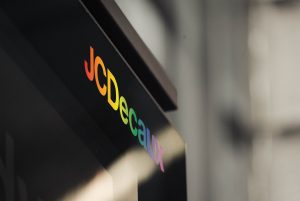 The JCDecaux logo, which is usually white, has been changed to vibrant rainbow colours in support of Mardi Gras and its philosophy.
The JCDecaux logo, which is usually white, has been changed to vibrant rainbow colours in support of Mardi Gras and its philosophy.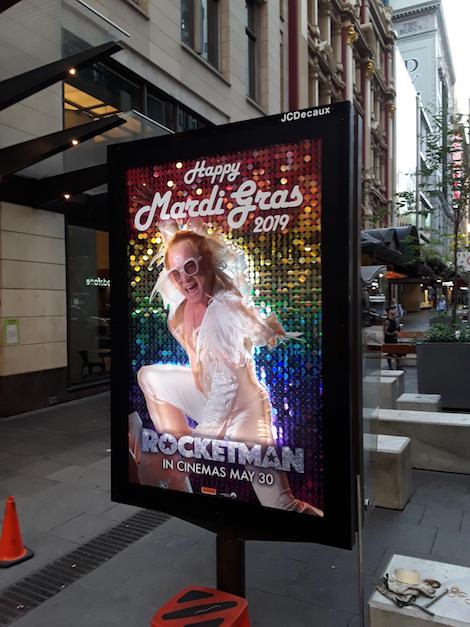
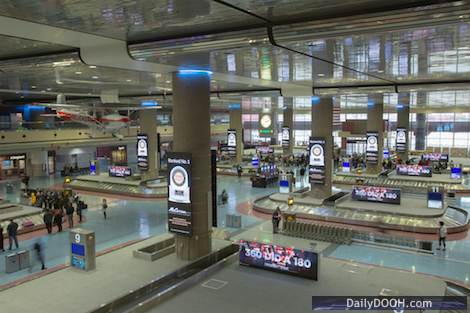
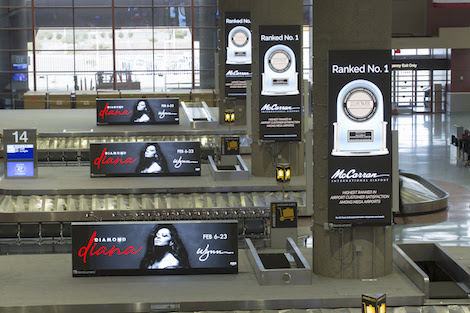
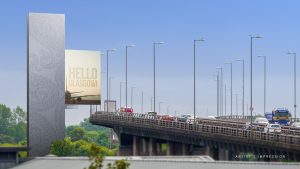
Follow DailyDOOH